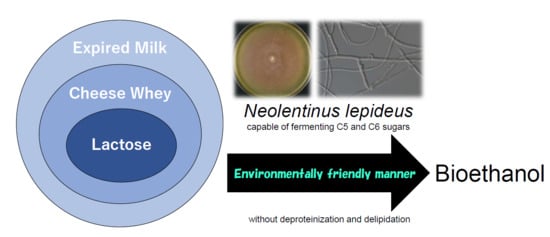Ethanol Production from Cheese Whey and Expired Milk by the Brown Rot Fungus Neolentinus lepideus
Abstract
Share and Cite
Okamoto, K.; Nakagawa, S.; Kanawaku, R.; Kawamura, S. Ethanol Production from Cheese Whey and Expired Milk by the Brown Rot Fungus Neolentinus lepideus. Fermentation 2019, 5, 49. https://doi.org/10.3390/fermentation5020049
Okamoto K, Nakagawa S, Kanawaku R, Kawamura S. Ethanol Production from Cheese Whey and Expired Milk by the Brown Rot Fungus Neolentinus lepideus. Fermentation. 2019; 5(2):49. https://doi.org/10.3390/fermentation5020049
Chicago/Turabian StyleOkamoto, Kenji, Saki Nakagawa, Ryuichi Kanawaku, and Sayo Kawamura. 2019. "Ethanol Production from Cheese Whey and Expired Milk by the Brown Rot Fungus Neolentinus lepideus" Fermentation 5, no. 2: 49. https://doi.org/10.3390/fermentation5020049
APA StyleOkamoto, K., Nakagawa, S., Kanawaku, R., & Kawamura, S. (2019). Ethanol Production from Cheese Whey and Expired Milk by the Brown Rot Fungus Neolentinus lepideus. Fermentation, 5(2), 49. https://doi.org/10.3390/fermentation5020049




